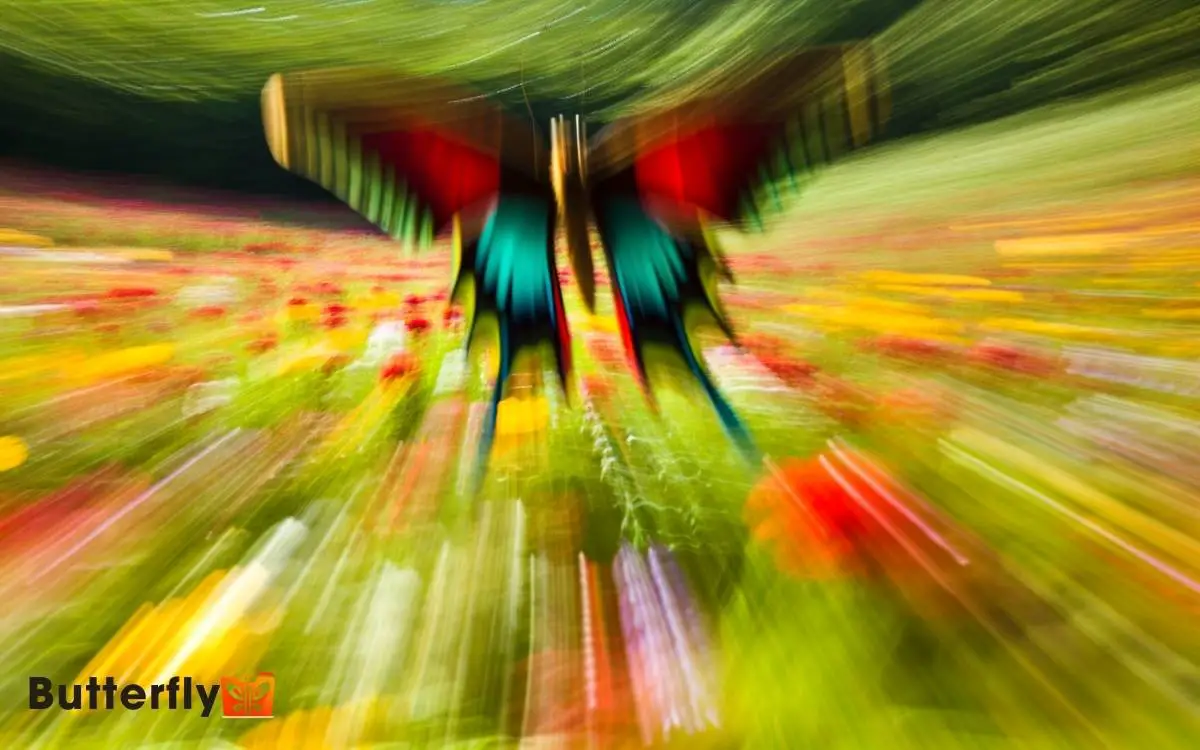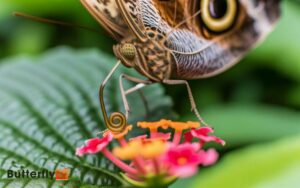How Fast Can A Butterfly Fly? 12 Miles Per Hour!
Butterflies fly at speeds ranging from 5 to 12 miles per hour. The Monarch butterfly can reach 12 miles per hour, while the Skipper exceeds this by a considerable margin, hitting speeds of up to 37 miles per hour.
Factors like wing size, muscle strength, and air temperature heavily influence their flight speeds. Larger butterflies with broader wings, such as the Monarch, prioritize lift, resulting in slower speeds.
In contrast, smaller species with compact wings, like the Skipper, achieve faster velocities. Warmer temperatures also enhance their muscle function, enabling quicker movements. The intricacies of wing morphology and environmental conditions reveal fascinating adaptations.

Key Takeaways
Average Butterfly Flight Speeds
On average, butterflies fly at speeds ranging from 5 to 12 miles per hour, depending on the species and environmental conditions. You’ll find that variables like wing size, muscle strength, and air temperature directly influence their flight speed.
For instance, larger butterflies with broader wings can generate more lift but might sacrifice speed for maneuverability. Conversely, smaller species with compact wings often achieve faster velocities.
Environmental factors such as wind currents and ambient temperature also play vital roles. Warmer temperatures can enhance muscle function, allowing for quicker, more efficient movements.
Fastest Butterfly Species
Among the diverse array of butterflies, the Monarch butterfly (Danaus plexippus) stands out as one of the fastest, capable of reaching speeds up to 12 miles per hour. This impressive velocity isn’t just for show; it aids their long migratory journeys across continents.
Another speedster, the Skipper butterfly, achieves even greater speeds, sometimes clocking in at 37 miles per hour. Their aerodynamic wing structure and muscular build contribute to this remarkable performance.
You’ll also find the Painted Lady (Vanessa cardui) among the top contenders, cruising at speeds of about 30 miles per hour.
These species exemplify evolutionary adaptations that maximize flight efficiency and survival, demonstrating nature’s ingenuity in combining form and function for peak performance.
Factors Influencing Speed
Several key factors influence a butterfly’s flight speed. Wing morphology, muscle strength, and environmental conditions are critical determinants. Larger wings can generate more lift, allowing butterflies to glide efficiently, while stronger flight muscles enable faster and more sustained movement. Additionally, environmental factors such as wind speed and temperature play a significant role in determining flight performance. Understanding butterfly weight facts can also provide insight into how body mass influences energy expenditure and agility in flight.
Wing morphology affects aerodynamic efficiency; larger wings provide more lift but can increase drag and decrease speed.
Muscle strength influences wingbeat frequency and amplitude, affecting acceleration and sustained flight. Environmental conditions like wind speed, temperature, and humidity also play significant roles.
Tailwinds can boost speed, while headwinds hinder it. Higher temperatures generally enhance muscle performance, while extreme humidity can weigh down wings.
Understanding these variables enables one to appreciate how adaptive strategies help butterflies optimize their flight in diverse ecosystems.
Butterfly Flight Mechanics
Understanding butterfly flight mechanics requires a detailed examination of wing kinematics, body dynamics, and the interplay between aerodynamic forces and muscular activity. You need to analyze how butterflies create lift and thrust through rapid, controlled wing flaps.
Each wingbeat results from coordinated muscle contractions, generating vortices that enhance lift. The flexible wing structure allows for subtle changes in angle, optimizing aerodynamic efficiency.
Additionally, body dynamics play an essential role; the butterfly’s lightweight frame minimizes inertia, enabling agile maneuvers.
Precise synchronization between wing movement and body position guarantees stability and control. By exploring these mechanics, you can uncover the sophisticated adaptations that enable butterflies to navigate their environment with remarkable agility and speed.
Comparing Speeds With Other Insects
To appreciate a butterfly’s flight speed, you can compare it to the velocities of other insects like dragonflies, bees, and beetles, each exhibiting unique aerodynamic strategies.
- Dragonflies, for instance, are among the fastest, reaching speeds up to 35 miles per hour due to their powerful, synchronous wing beats.
- Bees, with their rapid wing flaps, can achieve around 15 miles per hour.
- Beetles, though often slower, can still manage speeds up to 7 miles per hour, supported by their sturdy, yet less specialized wings.
- Butterflies, in contrast, generally fly at a leisurely pace of 5 to 12 miles per hour, relying on their broad, flexible wings for maneuverability rather than speed.
Understanding these differences highlights the diversity of insect flight adaptations.
Conclusion
To sum up, you’ve learned that butterfly flight speeds vary widely, with the fastest species, the Monarch butterfly, reaching up to 12 miles per hour. Isn’t it fascinating that such delicate creatures can move so swiftly?
Factors like wing shape, muscle strength, and environmental conditions all play vital roles. By understanding butterfly flight mechanics and comparing them to other insects, you’ve gained a detailed, scientific perspective on these incredible pollinators.
Keep observing—nature’s full of surprises!





